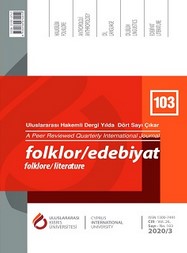Recalling a Forgotten Community: Jews of Diyarbakır
Recalling a Forgotten Community: Jews of Diyarbakır
Author(s): Süleyman ŞanliSubject(s): Jewish studies, History of Judaism, Cultural Anthropology / Ethnology, Migration Studies, Ethnic Minorities Studies
Published by: Uluslararası Kıbrıs Üniversitesi
Keywords: jews; culture; migration; memory; multicultural; Diyarbakır;
Summary/Abstract: The presence of Jews in Mesopotamia and Anatolia can be traced since ancient times. By the time, during the Ottoman reign Jews were dispersed to different parts of the state but especially concentrated in western regions such as Istanbul, Izmir, Bursa and Edirne. However, there were also Jewish communities lived in the eastern part of the Ottoman State and todays Turkey. There were also considerable Jewish communities who lived in the eastern part of the country in provinces such as Gaziantep, Urfa, Siverek, Diyarbakir, Çermik, Mardin, Nusaybin, Cizre, Başkale and Van. In this research eastern Jews is referred to Eastern part of first Ottoman later Turkey. This study aims to explore some cultural traits including religious, social and economical traits of the Jews, who once lived in the east and later immigrated to Israel Jews of Diyarbakır are one of those religious minority groups that have a long historical background in the city. The presence of Jews in Diyarbakır dated back centuries. Historians or researchers those interested in Jews of Turkey usually studied Jews of Istanbul, Jews of İzmir and Jews who live in different parts of the western cities. Lack of researches and scarcity of resources makes the Jews of Diyarbakır as one of the significant Jewish communities among the Eastern Jews that need to be taken into account. In this article it is aimed to explore migration process, religious, social and cultural conditions of a small religious group, who once lived in the east of Turkey and later moved to Israel. It is expected to introduce their way of life, their beliefs, and their relationships with other local groups and culture in a multicultural and multi-religious environment of the city of Diyarbakır. Additionally, majority of data for this article collected through indepth interviews that based on an anthropological fieldwork conducted in Israel. Therefore, information given by informants is the most important distinguishing feature of this study. It is expected to reveal this forgotten religious minority group more visible.
Journal: Folklor/Edebiyat
- Issue Year: 26/2020
- Issue No: 103
- Page Range: 545-557
- Page Count: 13
- Language: English

